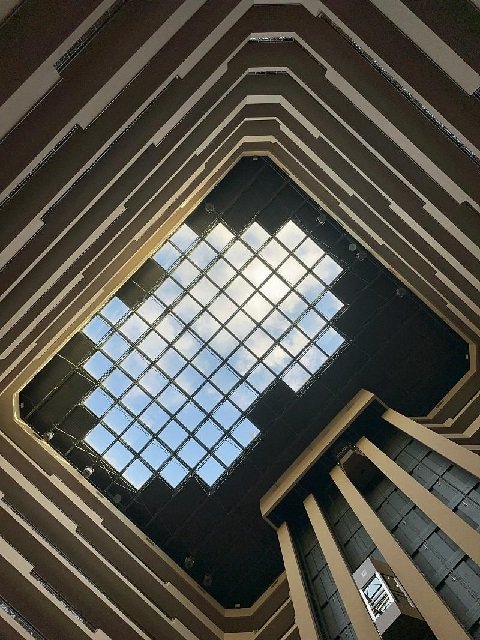The hospitality industry is witnessing a dynamic transformation, propelled by the integration of modern design elements. This evolution is not just about aesthetics; it’s a strategic fusion enhancing both comfort and efficiency. In this realm, Embassy Suites by Hilton stands as a prime example, embodying how contemporary design can elevate the guest experience.
The Harmony of Style and Comfort
Modern design in hospitality, particularly in hotels like Embassy Suites by Hilton, offers more than just a pleasing aesthetic; it signifies a deeper understanding of guest needs and expectations. The harmonious blend of form and function is a testament to how design can transform the hotel experience.
The Aesthetics of Modernity
The minimalist decor and neutral color palette of Embassy Suites by Hilton are not arbitrary choices. These elements are rooted in psychological insights suggesting that such environments reduce stress and enhance mental clarity. In today’s fast-paced world, a hotel room that serves as a calming retreat is invaluable. The use of clean lines and uncluttered spaces in Embassy Suites reduces visual noise, enabling guests to unwind and recharge.
Functional Elegance
The functional aspect of modern design in hotels is about aligning the environment with the guests’ lifestyles. In Embassy Suites, the ergonomic furniture is not just about comfort; it’s about creating a space conducive to various activities, whether work, relaxation, or socializing. The furniture’s design also takes into account ease of movement and accessibility, reflecting a commitment to inclusive design principles. This attention to detail ensures that the physical environment enhances, rather than impedes, the guest experience.
Innovation and Guest Experience
The intersection of innovation and design in the hotel industry is rapidly evolving, with guest experience at its core.
Embracing Technological Integration
The integration of technology in hotel design, as seen in Embassy Suites by Hilton, is a response to the digital lifestyle of modern travelers. Digital check-in and room selection are not just about efficiency; they’re about offering a personalized experience. Guests can tailor their stay to their preferences, reducing wait times and increasing satisfaction. This tech-forward approach also includes features like smart thermostats and automated lighting systems, which not only provide convenience but also contribute to energy efficiency.
Sustainable Design
Sustainability in hotel design goes beyond eco-friendly practices; it’s about creating spaces that promote health and well-being. Embassy Suites by Hilton’s approach to sustainable design includes using materials that are both environmentally friendly and contribute to indoor air quality. The hotel’s commitment to sustainability extends to energy-efficient lighting and water-conserving fixtures, reflecting a broader responsibility towards environmental stewardship.
Personalized and Inclusive Spaces
The modern design in hotels today is intensely focused on personalization and inclusivity, catering to a diverse array of guest needs.
Family-Friendly Versatility
Inclusive design in hotels like Embassy Suites by Hilton means considering the needs of all guests, including families. The in-suite kitchens and flexible sleeping arrangements are more than conveniences; they provide a sense of home and stability, especially important for families traveling with children. These features allow families to maintain their routines, offering comfort in the midst of travel. The hotel’s design also includes child-friendly amenities and safety features, ensuring that the stay is enjoyable for all family members.
Business Traveler-Focused Amenities
For business travelers, the design of Embassy Suites by Hilton is focused on creating an environment conducive to productivity. The workspaces are not just about providing a desk and a chair; they are thoughtfully designed areas with adequate lighting, comfortable seating, and minimal distractions. Connectivity options, such as high-speed internet and multiple charging ports, are essential for today’s digital workflow. These design elements demonstrate an understanding of the business traveler’s need for a space that supports efficiency and focus.
The Role of Architecture in Enhancing Hospitality
In the quest for innovation and excellence, the role of architecture in hospitality cannot be overstated. It’s a pivotal element that shapes the entire hotel experience, from the moment a guest steps in.
The Impact of Architectural Design
Have you ever been awestruck by the grandeur of a hotel’s lobby or the thoughtful layout of its spaces? Hotels like Embassy Suites by Hilton invest in architecture that’s not just visually appealing but also functionally intuitive. This design philosophy ensures that every aspect of the hotel’s structure contributes to a seamless and enjoyable stay.
Blending Local Culture with Modernity
The integration of local architectural elements with modern design is a trend gaining momentum. It allows guests to experience a touch of the locale’s culture and heritage. For example, an Embassy Suites in a historic city might feature design elements reflective of that city’s unique architectural history. How does this fusion of local and modern design enhance your stay?
Redefining Hospitality: How Modern Design Shapes the Future of Travel
As we observe, modern design in the hospitality industry is not a mere trend; it’s an ongoing evolution. Embassy Suites by Hilton exemplifies this, offering a glimpse into how hotels can blend aesthetics, functionality, and inclusivity to redefine the guest experience. How will these trends shape your future travel choices?
